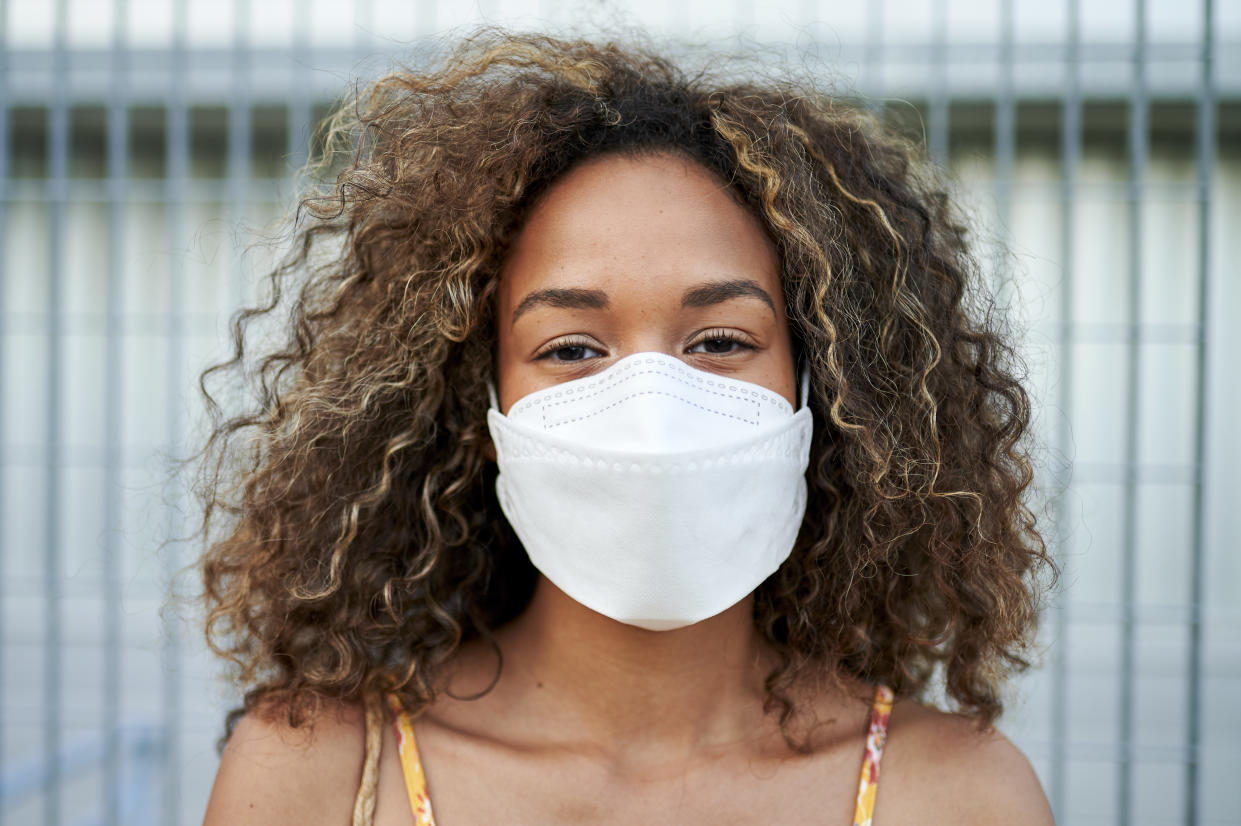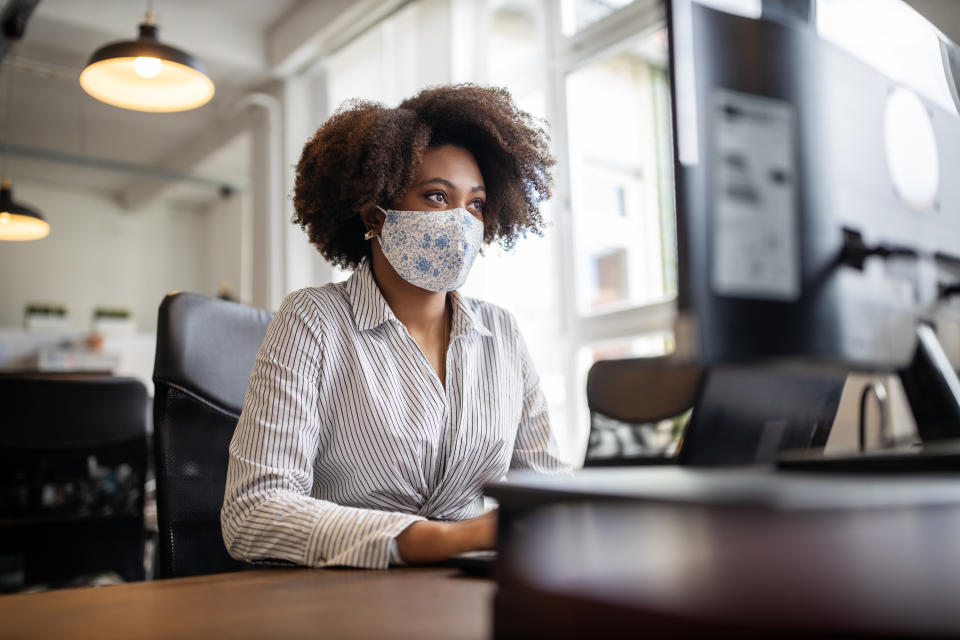'A matter of racial justice': COVID would have killed 58,000 more in England and Wales if white people faced the same risks as black communities, report suggests

A staggering 58,000 more people would have died during the first coronavirus wave in England and Wales alone if white people faced the same infection risk as their black counterparts, a report has suggested.
Early in the outbreak, statistics revealed people of black, Asian or minority ethnic (BAME) backgrounds were more likely to become seriously ill with the infection than their white peers.
A Public Health England report released in June found that among confirmed coronavirus cases, non-white people were between 10% and 50% more likely to die.
Read more: Immediate circuit breaker needed to stem UK’s second coronavirus wave
Research by the think tanks Runnymede Trust and Institute for Public Policy Research (IPPR) has since revealed tens of thousands more fatalities would likely have been recorded if white people faced the same risk as black communities.
The authors stressed the issue was not that the coronavirus is a “racist disease”, but rather that black people endured a higher risk due to “a society that is riddled with structural inequalities”.

“We are now experiencing the second wave of this dangerous virus and once again it is running along racist grooves,” said lead author Parth Patel from the IPPR.
“Our new research puts into context how stark the inequalities are.
“Addressing them is a matter of racial justice, but also a matter of public health – inequalities fuel pandemics.
“Yet many months after the unequal impacts first began to emerge, little or nothing is being done to address them.
“We can and should take practical steps now to better protect minority ethnic communities, to support people to self-isolate and to ensure healthcare access is less unequal in the dangerous winter months that lie ahead.”
Read more: England among nations with highest death toll in first coronavirus wave
It has previously been suggested a BAME person may be more likely to be obese or have type 2 diabetes, raising their risk of coronavirus complications.
Data from the Office for National Statistics (ONS) has since found, however, the higher risk of death among BAME patients is down to where they live and their occupation, not their overall health.
BAME individuals may be more likely to have front-line jobs – like care home staff, bus drivers or supermarket employees – raising the risk they will be exposed to the virus.
They may also live in crowded, multi-generational households, where social distancing is almost impossible.
“I am repeatedly asked if COVID-19 [the disorder caused by the coronavirus] is a ‘racist disease’ – it is not,” said co-author Dr Halima Begum from the Runnymede Trust.
“It prevails in a society that is riddled with structural inequalities whose roots are firmly entrenched in race and ethnicity.”
Watch: Can you catch coronavirus twice?
To better understand the impact of ethnicity on a person’s coronavirus death risk, the report’s authors analysed data put together by the Carnall Farrar consultancy and analytics firm for IPPR.
The results suggest fatality rates are 3.3 and 2.4 times higher among black men and women, respectively, than their white counterparts.
Perhaps most staggeringly, the authors also found if white people faced the same risk as black individuals, at least 58,000 more would have died with the coronavirus during the first wave in England and Wales alone.
If white people had the same risk as those of south Asian descent, 35,000 more patients would have died, they added.
After adjusting for age and sex – with being elderly and male both a risk for coronavirus complications – at least 2,500 black and south Asian deaths could have been avoided if ethnicity was not a factor, the authors wrote in the report Ethnic inequalities in COVID-19 are playing out again – how can we stop them?
Read more: Coronavirus survivor left with 'irreversible' hearing loss
They also found non-white coronavirus patients tended to be more acutely ill when they went to A&E, with black and south Asian individuals being 55% and 35% more likely to require resuscitation or very urgent care, respectively, than their white counterparts.
Black patients were also more than twice as likely to be admitted directly to a high dependency or intensive care unit.
Echoing the ONS data, the report stated “underlying diseases (such as heart disease, lung disease and diabetes) are not driving the inequalities”.
“The prevalence of these diseases vary between ethnic groups, but when considered together, they do not explain the difference in risk of death from COVID-19 between ethnic groups,” wrote the authors.
“We estimate co-morbidities lead to the black population being only 5% more likely to die from COVID-19 than the white population.”
The report’s authors also dismissed the suggestion genetic differences between varying ethnicities may be driving black people’s higher risk.
For example, while prostate cancer is unrelated to the coronavirus, the disease is more common among men of African-Caribbean and African descent than Asian males.
“Genetics cannot explain why every minority ethnic population, given huge genetic diversity within and between these groups, has a higher risk of death from COVID-19 than the white ethnic population,” wrote the authors.
“Instead, this inequality is likely to be driven by structural and institutional racism that results in differences in social conditions (such as occupation and housing) and differential access to healthcare.”
The report also revealed minority ethnic communities suffered disproportionately from public health budget cuts in recent years, with the 10 most ethnically diverse local authorities losing £15m ($19.5m) more than the 10 least ethnically diverse local authorities since 2014/15.
Earlier in 2020, the Runnymede Trust found people from ethnic minority communities were 18% less likely to be aware of the government’s “stay at home” message.
Many may have also found it difficult to maintain social distancing. Nearly a third of Bangladeshi households and 15% of black African homes in the UK are classified as “overcrowded”, compared to just 2% of white households.
The report’s authors are calling on the UK government to reduce the risk of infection and coronavirus deaths among ethnic minorities.
This includes offering temporary housing to people needing to isolate, as well as ensuring the £500 ($650) low-income payment for those unable to work from home is available to all, like individuals without immigration status.
“There can be no justification for the finding that 58,000 more people would have died in England and Wales if the white population had faced the same underlying risks as black communities,” said Dr Begum.
“If that figure does not give the government cause to sit up, listen and take action, I don’t know what will.
“Urgent action must be taken to address these injustices and inequalities.”
Watch: What is long COVID?



